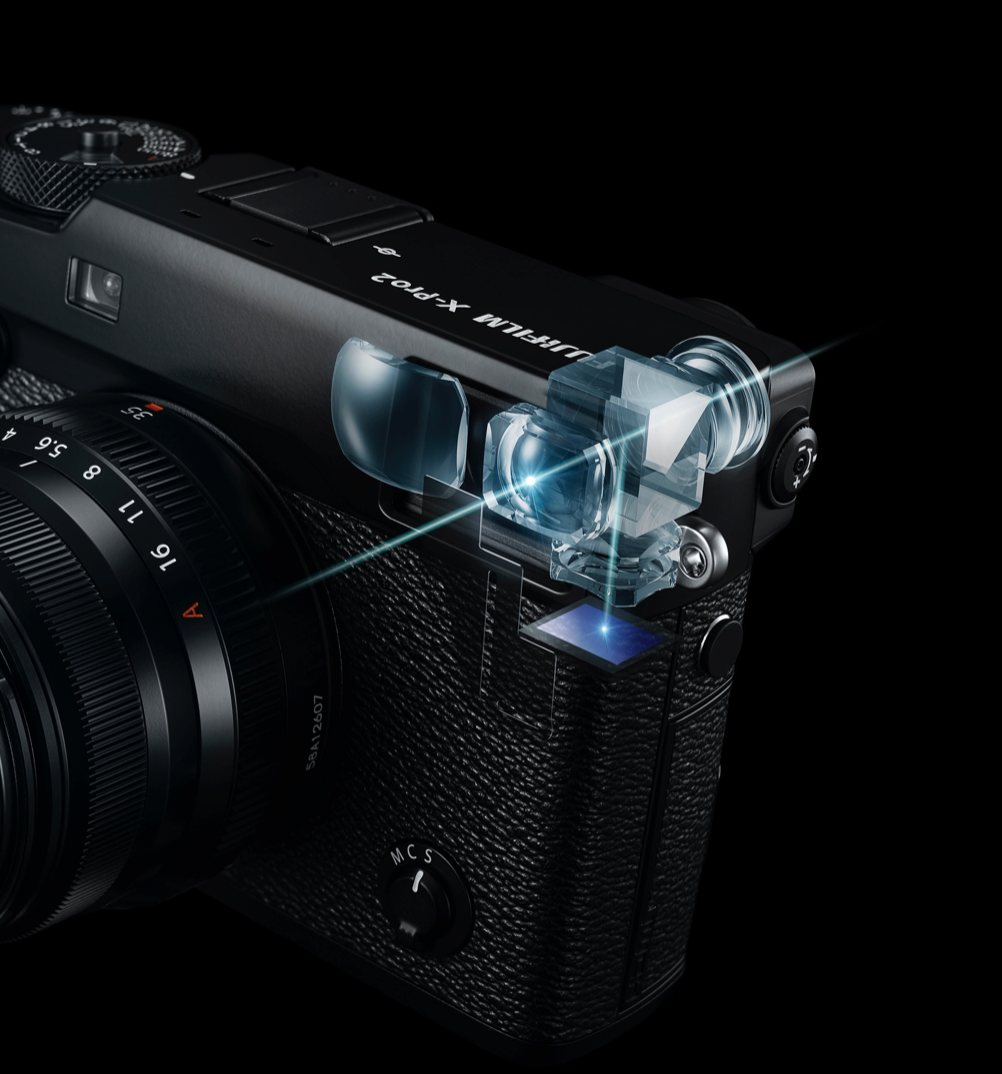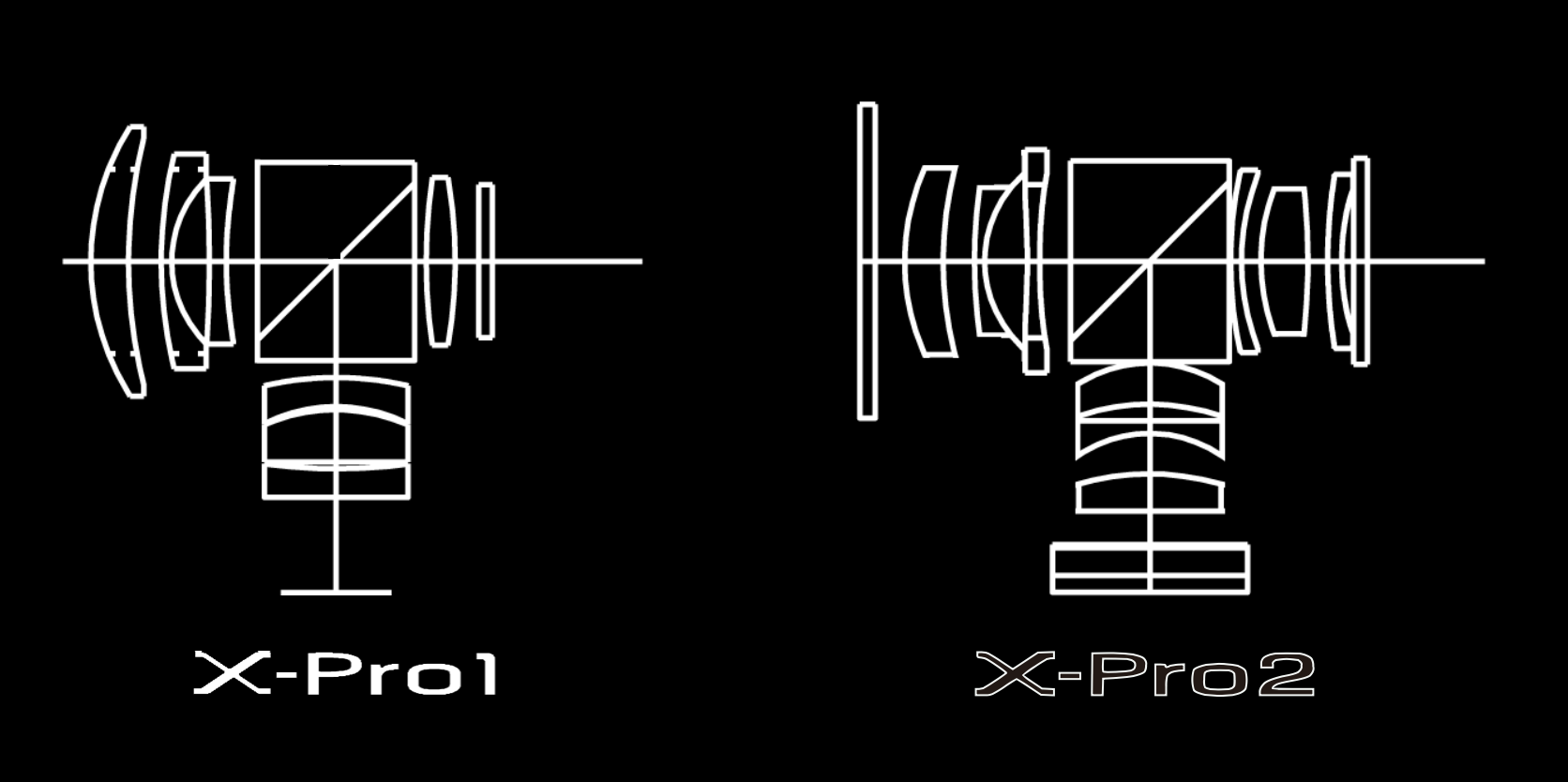
Advanced Hybrid Multi Viewfinder of X-Pro2 Part2
The X-Pro2 saw a major advancement from X-Pro1 in all aspect. Needless to say, the X-Pro2’s Hybrid Multi Viewfinder is no exception. It underwent an extensive review and was built with a new design. The optical unit, electronic device, mechanical construction and etc. all now have new parts.
Among them, the advancement of the electronic device is quite remarkable.
Thanks to the X Trans CMOS III and X Processor Pro, we can now fully utilize the the high performance of the LCD panel. The improvement in resolution, frame rate, and display response are huge. Just a few years back, people debated whether EVF will ever replace OVF. If you look into the X-Pro2’s EVF, then you will know that we are now in a different age.
There is a dilemma however. The optical design becomes more challenging with the advancement of the LCD panel. With the ability to display higher resolution, the optical performance also needs to be improved. It is the same logic as a lens would become obsolete with the advancement in sensor’s ability to achieve higher resolution.
It is easier for the lens to keep up with the high resolution sensor. There is always a way to make higher performance lens by making the lens barrel bigger. But we cannot do the same for the finder. It has to fit within the camera body size.
So the size should remain the same, but the resolution should become higher, and there shouldn’t be a distortion. To achieve this, we review and redesign the optical unit.
To be specific, we achieved it by replacing the glass material of the half prism with even higher high refractive index and by adding an aspherical lens to the eyepiece. And to go with the change, lens construction has also been renewed for the objective lens and LCD panel.
Finder is an aggregation of optical pieces. It also is an aggregation of mechanical parts. Especially for the Hybrid Multi Viewfinder of X-Pro2, it has to work with the EVF shutter, Electronic Range Finder shutter, and optical unit for the finder magnifications. In order for the three units to work independently, 3 actuators are installed. When you manipulate the lever on the front-end of the camera body, and you will notice the little “click”. That is the sound of the actuator moving.
Along with the advancement in design, there is also a progress in the manufacturing ability.
You will notice the difference by looking at the bright frame. With the X-Pro1, the bright frame worked only up to the focal length of 60mm, but with the X-Pro2 it has been extended to 140mm.
It is partly because the XF60mm was the lens with the longest focal length when the X-Pro1 was announced, but bigger reason is that the precision for the finder unit was very demanding for the longer focal length.
Of course, the design of the unit has a lot to do with the precision, but we need to manufacture it in the end. Inevitably there will be a difference in tolerance for each parts. It may be in the unit of 1/1000, but if you assemble the 10 pieces will it be 10/100 or will it be 1/1000 by absorbing the tolerance? It depends on the manufacturing process.
There are advantages of using the OVF with longer focal length lens. For example, you can use it like iron sights that can view wider field of view. You will be able to keep track of the subject in sports or wildlife. If you are in ERF mode, then you can check the entire scene while keep tracking the main subject. There is no worry of balck out in the continuous shooting mode either.
So why is FUJIFILM so particular about a viewfinder?
The reason is simple. Viewfinder is what a photographer sees the most.
You may be looking at the subject while shooting, but really you are looking at the finder.
You can probably operate a camera that you are accustomed to without looking at the camera.
But you are doing so while you look into the finder.
The Hybrid Multi Viewfinder of the X-Pro2 are created with such passion.


















































